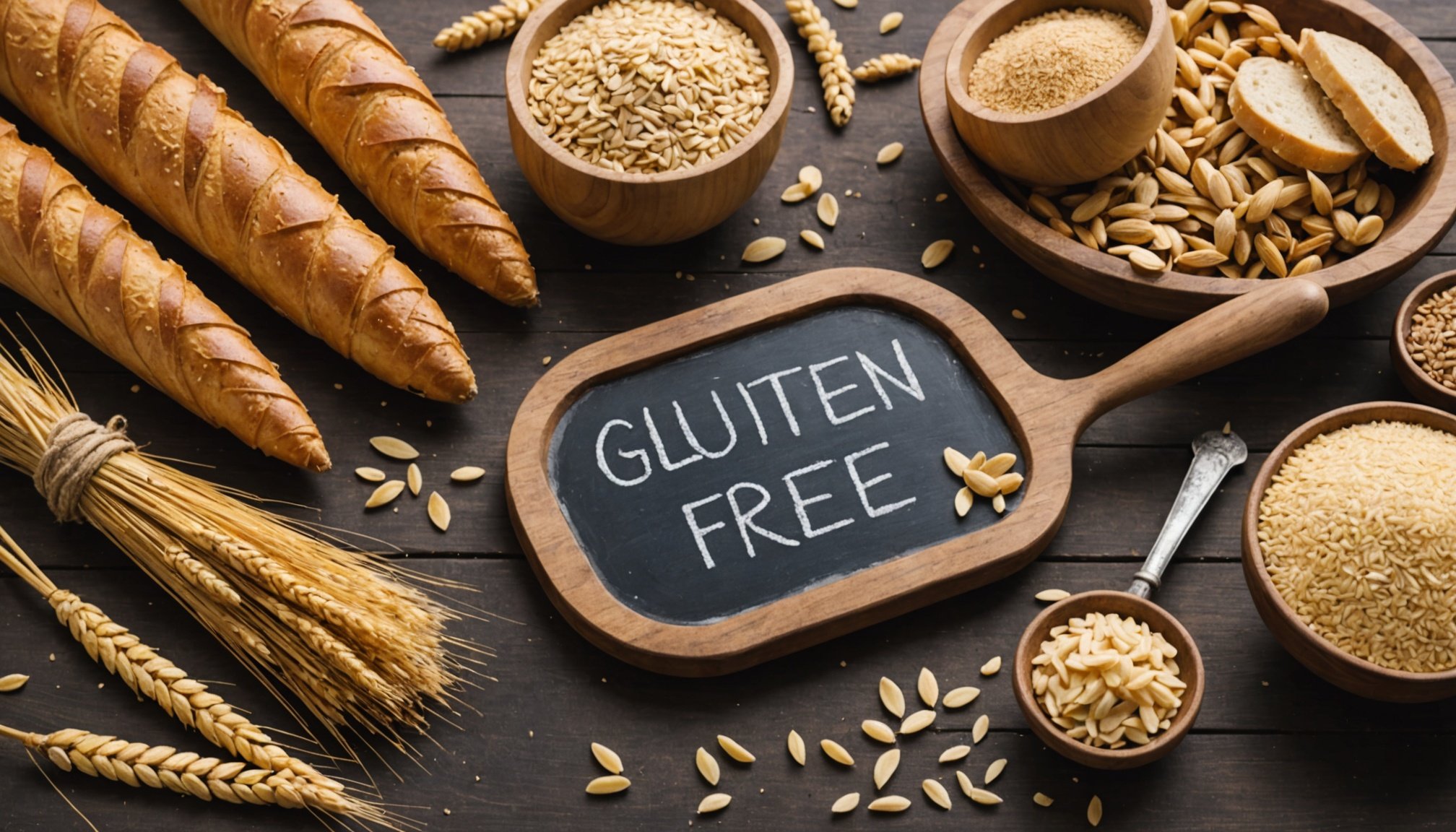Unlocking Relief: The Role of a Gluten-Free Diet in Alleviating Gluten Sensitivity Symptoms
Understanding Gluten Sensitivity
Gluten, a protein found in wheat, barley, and rye, is a staple in many diets around the world. However, for some people, consuming gluten can trigger a range of symptoms that can significantly impact their quality of life. Gluten sensitivity, which includes conditions like celiac disease, non-celiac gluten sensitivity, and wheat allergy, affects a substantial number of individuals.
What is Celiac Disease?
Celiac disease is an autoimmune disorder where the ingestion of gluten leads to damage in the small intestine. This damage impairs the intestine’s ability to absorb nutrients, resulting in various health issues. According to the Celiac Disease Foundation, celiac disease affects about 1 in 100 people worldwide, although many cases remain undiagnosed[4].
Also read : Exploring the Impact of Cultural Travel on Mental Well-Being and Creative Expression
Non-Celiac Gluten Sensitivity
Non-celiac gluten sensitivity (NCGS) is a condition where people experience symptoms similar to celiac disease, but without the same level of immune system activation and intestinal damage. Symptoms can include abdominal pain, bloating, diarrhea, and fatigue. While the exact mechanisms behind NCGS are not fully understood, it is clear that a gluten-free diet can provide significant relief for those affected[5].
Wheat Allergy
A wheat allergy is an immune reaction to one of the proteins in wheat, which can cause symptoms like hives, itching, and difficulty breathing. This is different from celiac disease and NCGS but also requires a gluten-free diet for management.
Additional reading : Boosting Adolescent Mental Health: The Transformative Power of Nature Walks
Symptoms of Gluten Sensitivity
The symptoms of gluten sensitivity can vary widely among individuals but often include:
- Gastrointestinal Issues:
- Diarrhea
- Abdominal pain
- Bloating
- Gas
- Constipation
- Systemic Symptoms:
- Fatigue
- Weight loss
- Joint pain
- Skin rashes
- Neurological symptoms like headaches and cognitive impairment
- Other Symptoms:
- Anemia
- Osteoporosis
- Hair loss
- Numbness or tingling in the hands and feet
Here is a detailed list of symptoms that might indicate gluten sensitivity:
- Diarrhea
- Fatigue
- Abdominal pain
- Bloating
- Gas
- Constipation
- Joint pain
- Skin rashes
- Headaches
- Cognitive impairment
- Anemia
- Osteoporosis
- Hair loss
- Numbness or tingling in the hands and feet
- Weight loss
- Depression
- Anxiety
The Role of a Gluten-Free Diet
Adopting a gluten-free diet is the primary treatment for all forms of gluten sensitivity. Here’s how it can help:
How a Gluten-Free Diet Works
A gluten-free diet involves avoiding all foods that contain gluten. This includes obvious sources like bread, pasta, and baked goods made from wheat, barley, or rye, as well as less obvious sources like processed meats, sauces, and some medications.
Benefits of a Gluten-Free Diet
- Relief from Symptoms: The most immediate benefit is the alleviation of symptoms. People with celiac disease, NCGS, or a wheat allergy often report significant improvement in their health within weeks of starting a gluten-free diet.
- Improved Nutrient Absorption: For those with celiac disease, a gluten-free diet allows the small intestine to heal, improving nutrient absorption and reducing the risk of malnutrition.
- Reduced Inflammation: Gluten can cause inflammation in the body, which can lead to various health issues. A gluten-free diet can help reduce this inflammation.
- Weight Loss: Some people experience weight loss on a gluten-free diet, possibly due to the avoidance of high-calorie, processed foods that often contain gluten.
Practical Tips for a Gluten-Free Diet
Transitioning to a gluten-free diet can be challenging, but with the right approach, it can be manageable and beneficial. Here are some practical tips:
Identifying Gluten-Free Foods
- Fresh Foods: Fresh fruits, vegetables, meats, fish, and poultry are naturally gluten-free.
- Gluten-Free Grains: Rice, quinoa, corn, and gluten-free oats are good alternatives to wheat, barley, and rye.
- Label Reading: Always read food labels to ensure the product is gluten-free. Look for certifications like the Gluten-Free Certification Organization (GFCO) or the Celiac Support Association (CSA).
Avoiding Cross-Contamination
- Separate Preparation Areas: Use separate cooking utensils, pans, and preparation areas to avoid cross-contamination with gluten-containing foods.
- Cleanliness: Ensure all surfaces and equipment are thoroughly cleaned before preparing gluten-free meals.
Eating Out
- Research Restaurants: Choose restaurants that have gluten-free options and inform your server of your dietary needs.
- Ask Questions: Don’t hesitate to ask about ingredients and preparation methods to ensure your meal is safe.
Here is a comparison table to help you identify gluten-free and gluten-containing foods:
| Food Category | Gluten-Free Options | Gluten-Containing Foods |
|---|---|---|
| Grains | Rice, Quinoa, Corn, Gluten-Free Oats | Wheat, Barley, Rye |
| Baked Goods | Gluten-Free Bread, Cakes, Pastries | Traditional Bread, Cakes, Pastries |
| Pasta | Gluten-Free Pasta | Traditional Pasta |
| Processed Foods | Labeled Gluten-Free Products | Many Processed Meats, Sauces, Snacks |
| Beverages | Most Juices, Teas, Coffees | Some Beers, Flavored Coffees |
| Snacks | Fresh Fruits, Nuts, Gluten-Free Crackers | Many Snack Bars, Crackers |
Additional Considerations
Low FODMAP Diet
For some individuals, especially those with irritable bowel syndrome (IBS), a low FODMAP diet may be beneficial in conjunction with a gluten-free diet. FODMAPs (Fermentable Oligo-, Di-, Mono-saccharides, and Polyols) are types of carbohydrates that can exacerbate digestive symptoms.
Nutritional Balance
A gluten-free diet can sometimes be low in certain nutrients, such as fiber, iron, and B vitamins. It is essential to ensure you are getting a balanced diet by including a variety of gluten-free foods and considering supplements if necessary.
Real-Life Examples and Anecdotes
Many people have found significant relief by adopting a gluten-free diet. Here’s an example:
“Before going gluten-free, I experienced constant bloating and abdominal pain. I felt tired all the time and had difficulty concentrating. After just a few weeks on a gluten-free diet, I noticed a dramatic improvement in my symptoms. I had more energy, my digestive issues resolved, and I felt overall healthier.” – Sarah, who has non-celiac gluten sensitivity.
A gluten-free diet is not just a trend; it is a necessary lifestyle change for those with gluten sensitivity. By understanding the symptoms, benefits, and practical tips for adopting a gluten-free diet, individuals can significantly improve their health and quality of life.
As Dr. Alessio Fasano, a renowned expert in celiac disease and gluten sensitivity, notes, “The gluten-free diet is the only treatment for celiac disease and non-celiac gluten sensitivity. It requires a thorough understanding of what foods contain gluten and how to avoid them while maintaining a balanced and nutritious diet”[4].
In conclusion, if you suspect you have gluten sensitivity, consulting with a healthcare provider and starting a gluten-free diet could be the key to unlocking relief from your symptoms. Remember, it’s not just about cutting out gluten; it’s about adopting a healthier, more balanced lifestyle.











